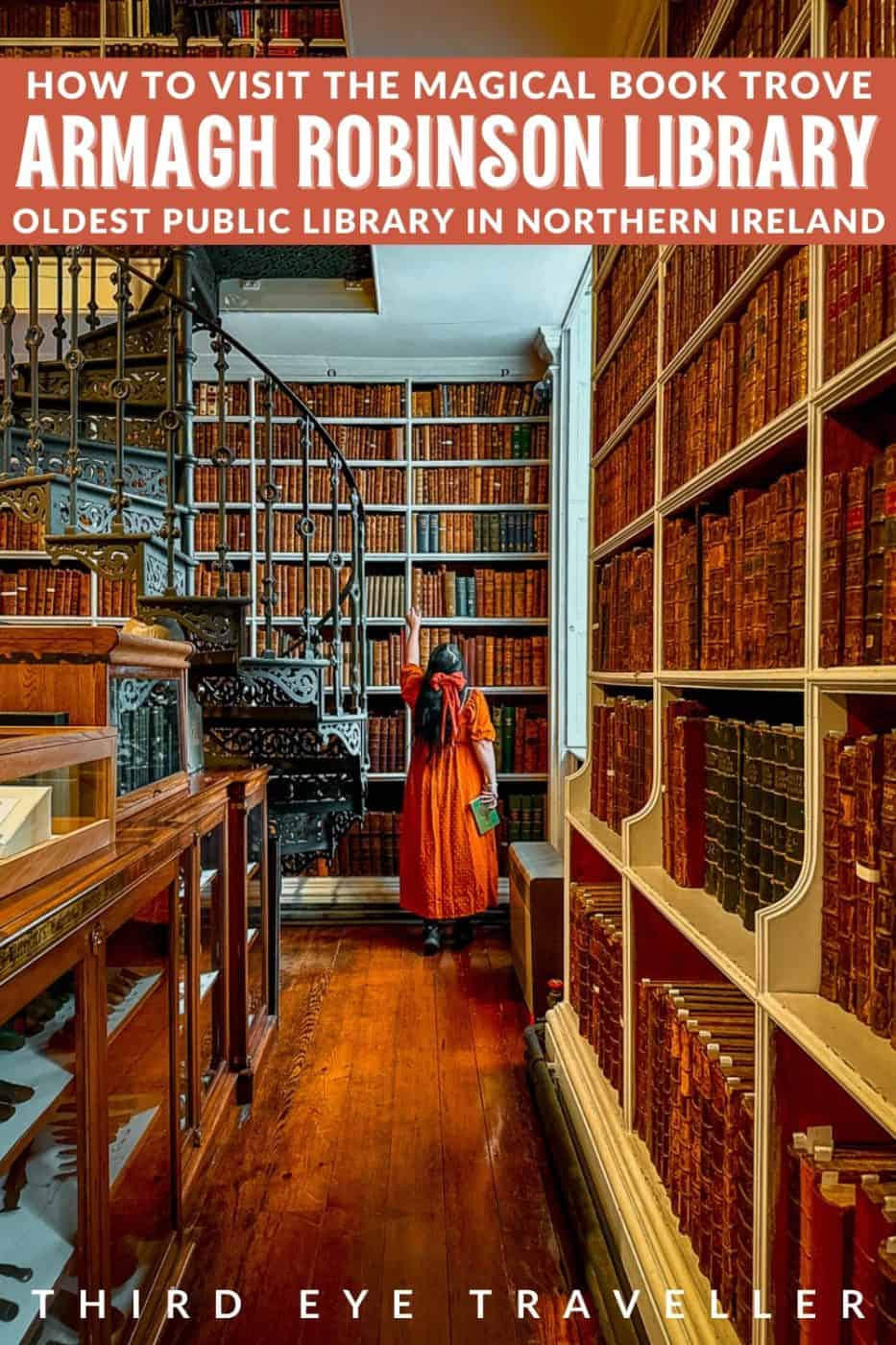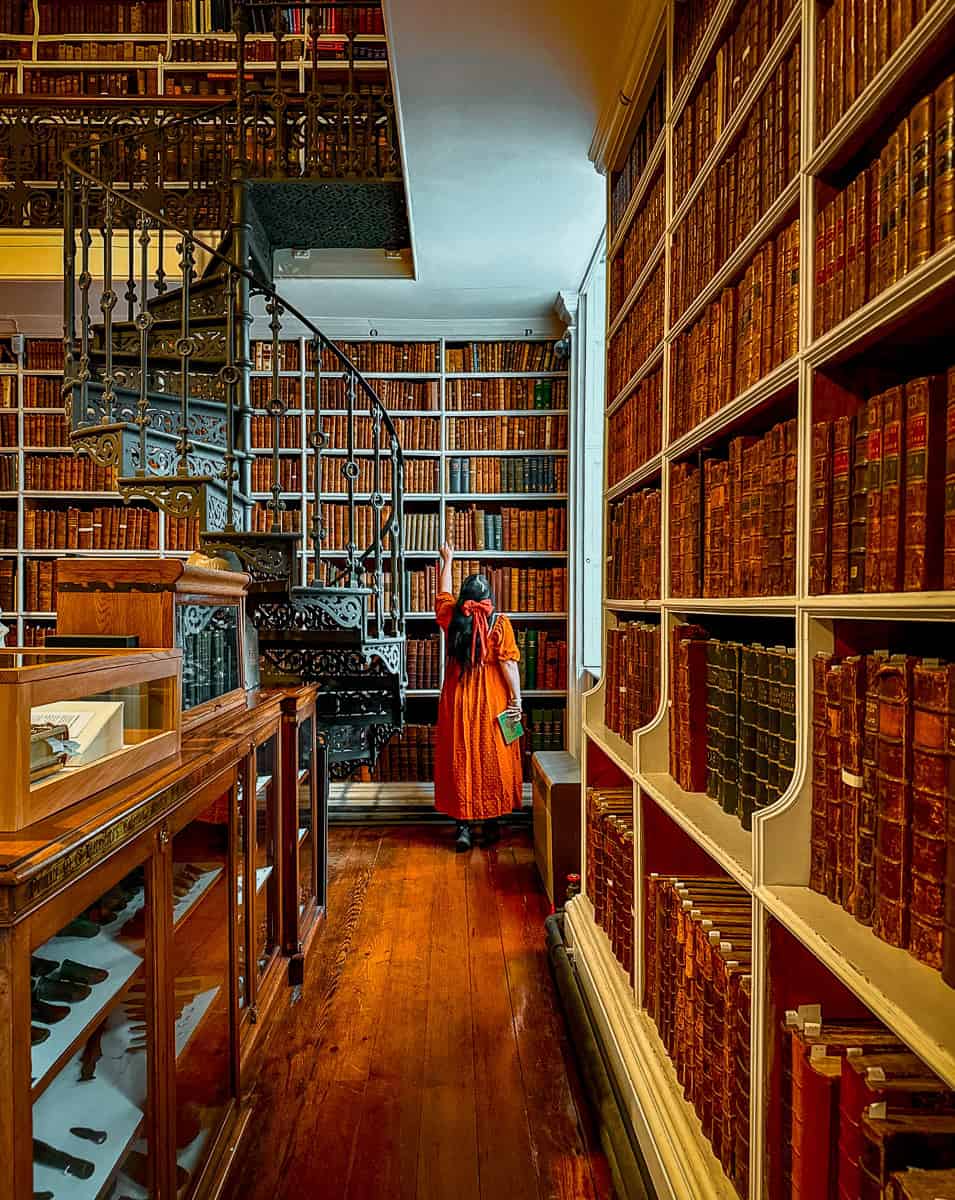Did you know that the oldest public library in Northern Ireland is the Armagh Robinson Library?
It is a delightful Georgian building that makes you feel like you’ve stepped back in time.
You can visit their magical Long Room which has bookshelves from floor to ceiling and contains over 46,000 printed works.
In addition to tomes, you can browse their curios treasures, including historic coins, medals, maps, medieval manuscripts, and more.
I’ve had this library on my bucket list for years now so I was over the moon to finally make it happen. This book trove was a dream come true.
Here is how to visit the Armagh Robinson Library and what to expect.
The History of Armagh Robinson Library
The Armagh Robinson Library was founded in 1771 by Archbishop Richard Robinson.
Born in Surrey, he was educated in Oxford and moved to Ireland in 1751 where he started his career as a chaplain.
Robinson was later promoted and served as a Bishop in many counties until he was appointed Archbishop of Armagh and the Primate of All Ireland in 1765.
Armagh was to become Robinson’s passion project until he died in 1794.
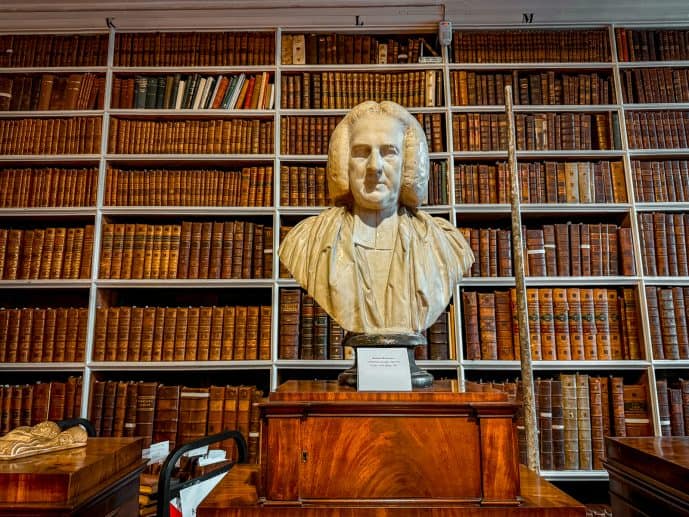
He compiled a census of inhabitants and initiated building works to significantly expand and develop the area.
One of his most important projects was to open a library where he could share his collection of knowledge with the general public.
He paid for the construction out of his funds and donated over 8,000 books from his private collection.
There were volumes on theology, philosophy, travels, history, law, medicine and some classics.
It opened as the ‘Armagh Public Library’ but later changed its name to the Armagh Robinson Library in 2017 in memory of its founder.
Today, the library’s collection has over 46,000 printed books but also many maps, gems, art pieces and sculptures to discover.
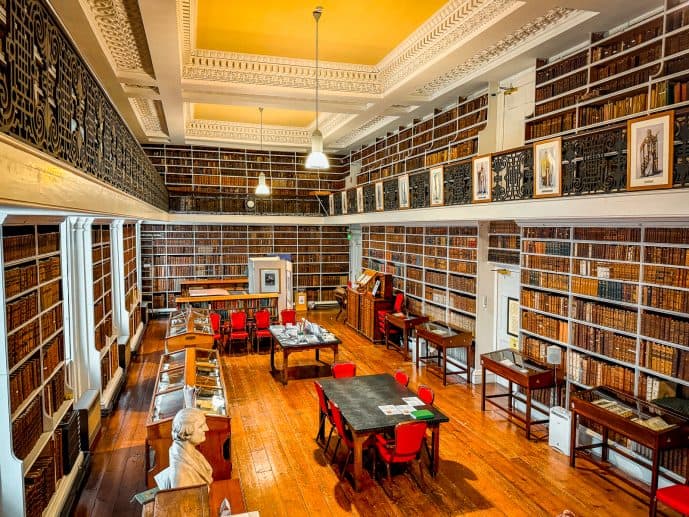
Can you visit the Armagh Robinson Library?
Yes, the great thing about Armagh Robinson Library is that this historic library is open to all.
It’s the oldest public library in Northern Ireland and they welcome anyone who wishes to look inside.
It’s set in a fabulous Georgian building which is perfect for lovers of architecture.
They also have thousands of books to browse which is a dream for those who like to read.
It’s a bibliophile’s haven and well worth a visit. They welcome people of all ages who have curious minds and are open to exploring!
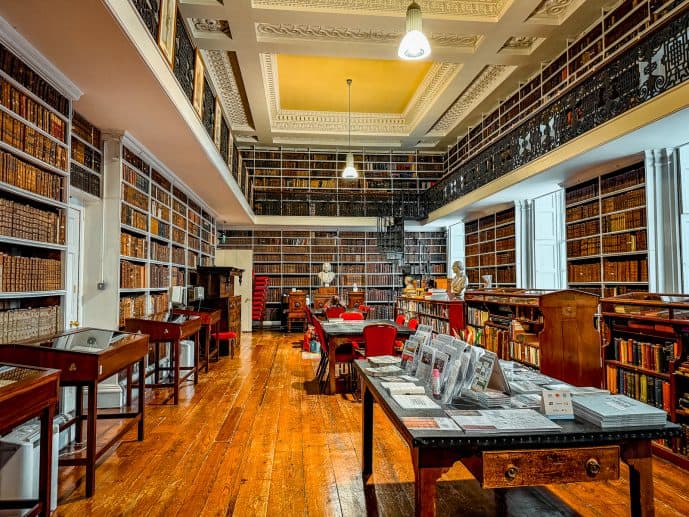
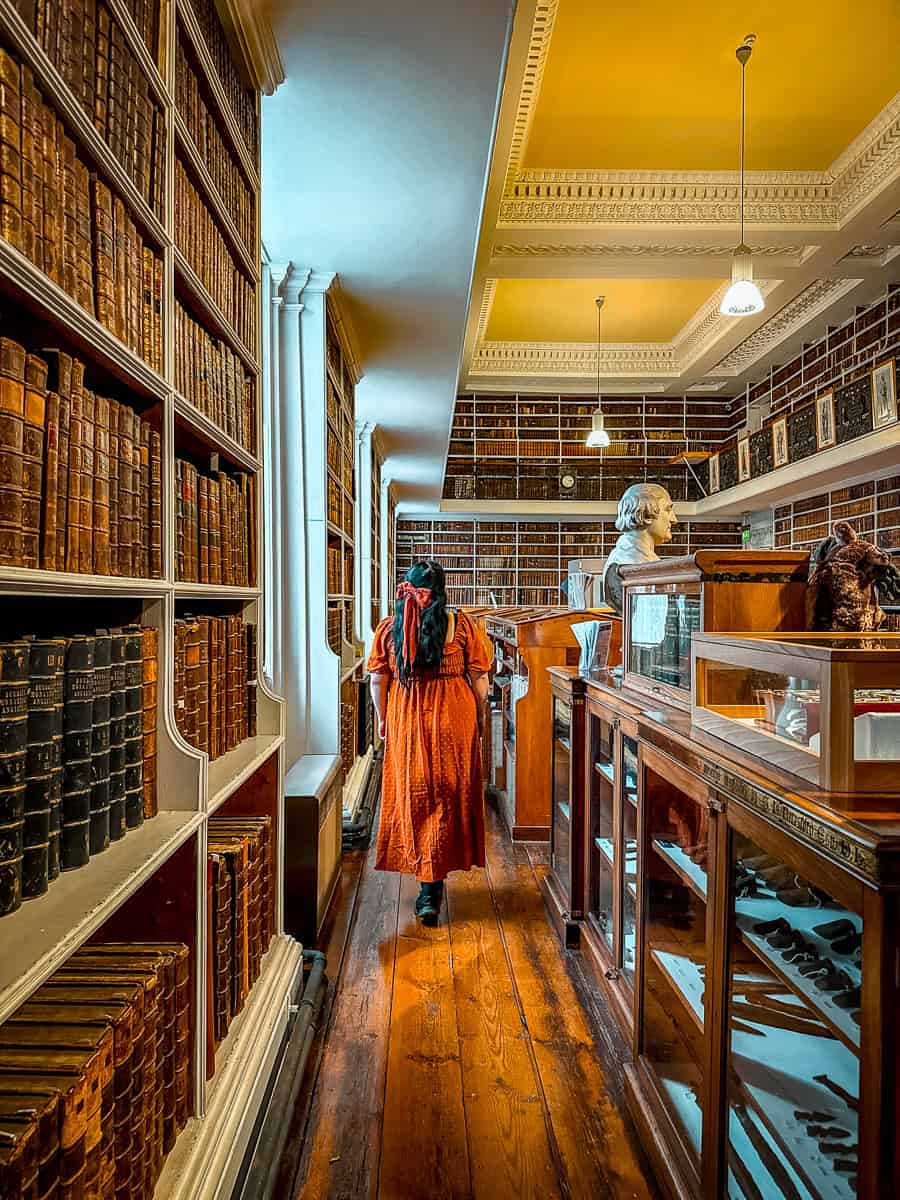
Entering the library
Once you reach the city of Armagh and find a place to park, you need to head to the historic building at 43 Abbey Street.
It’s good to know that the library doors will always be locked at street level.
So, you need to ring the doorbell and use the intercom to speak to the staff that you’d like to visit.
You’ll then be buzzed into the building and you can ascend a sweeping scarlet staircase to the upper floor!
Although this does feel quite formal at first, don’t fret as the library staff are very friendly.
I was instantly welcomed by a kind librarian named Carol, they were happy to have me and asked what I wanted out of my visit. It was all very easy.
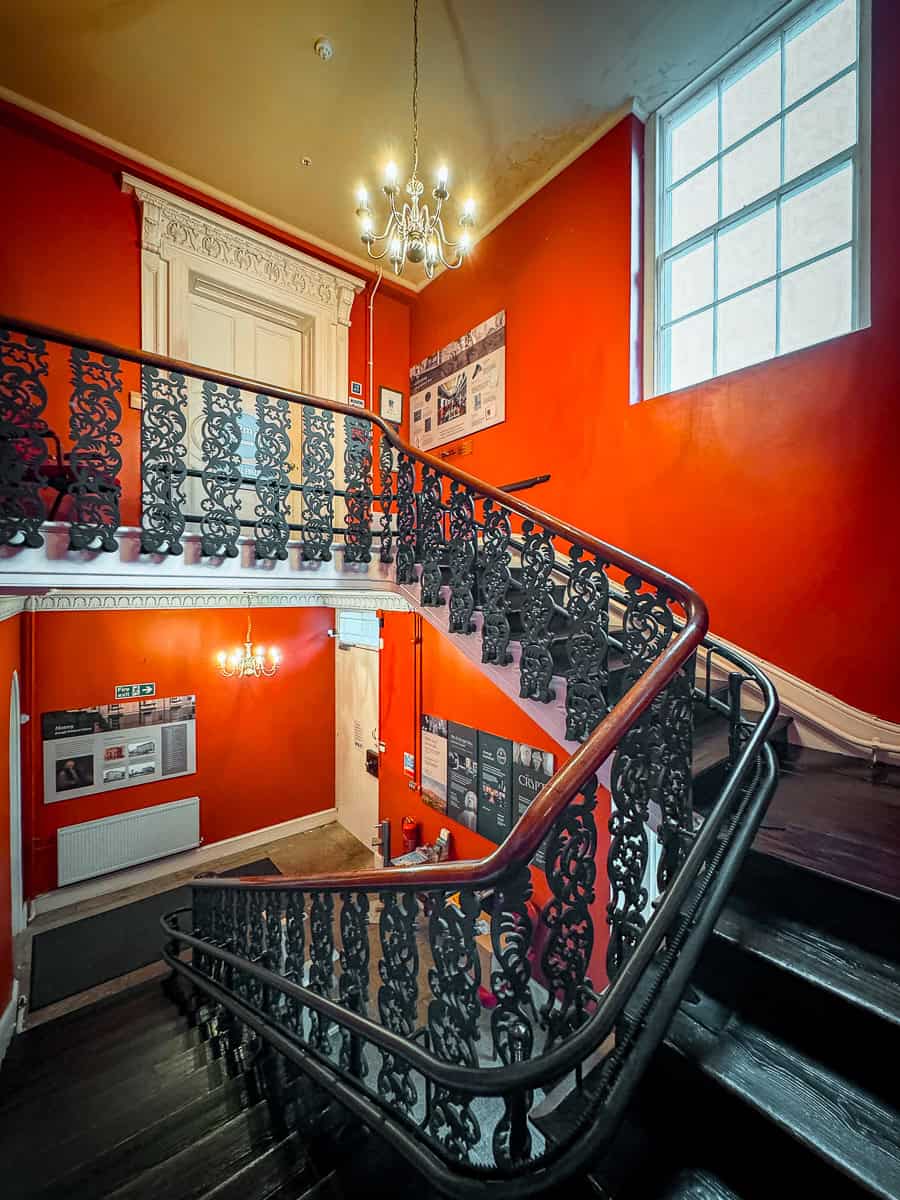
Things to do inside Armagh Robinson Library
What I loved about the Armagh Robinson Library was that they were so welcoming and made you feel comfortable during your visit.
They were happy for you to explore on your own, take photos, have a guided tour or look at a specific book in their collection.
I took a self-guided tour at first to get some photos. It was so peaceful and I could have spent an age in there.
I was also the only visitor there the entire time which surprised me!
I later took a guided tour of the library by Carol to learn the history and see Jonathan Swift’s private copy of Gulliver’s Travels. I loved every minute.
Here are all the things you can look forward to on your visit.
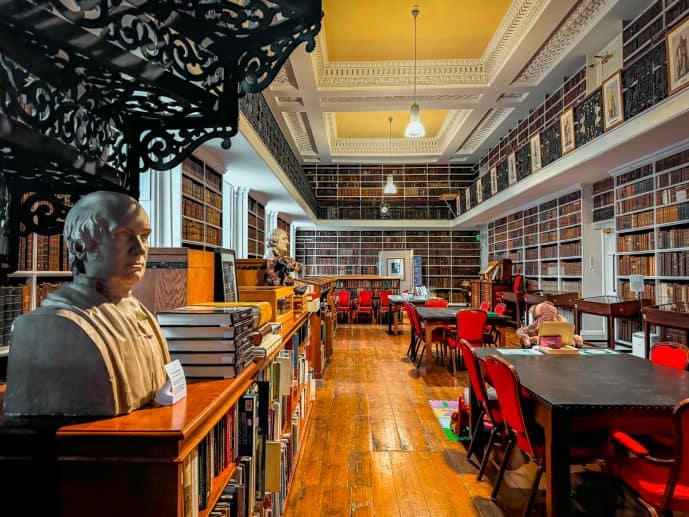
1. Visit the Long Room
The main visiting area is the Long Room which will transport you to the Georgian era.
I loved the contrast of white bookshelves with historic dark leather tomes and the vast windows that let in lots of natural daylight.
It’s an open-plan space with lots to see and you can see an imposing bust of Richard Robinson at the far end.
The upper levels are closed off and reserved for staff for safety reasons.
However, one of the highlights of my visit was climbing up their stunning spiral staircase to get a better view. Don’t worry, I asked permission first.
It’s one of the prettiest libraries I’ve visited and I couldn’t stop taking photos of everything.
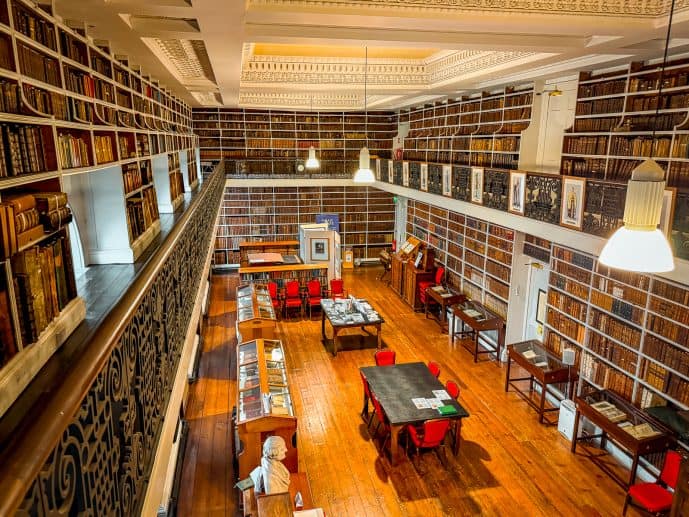
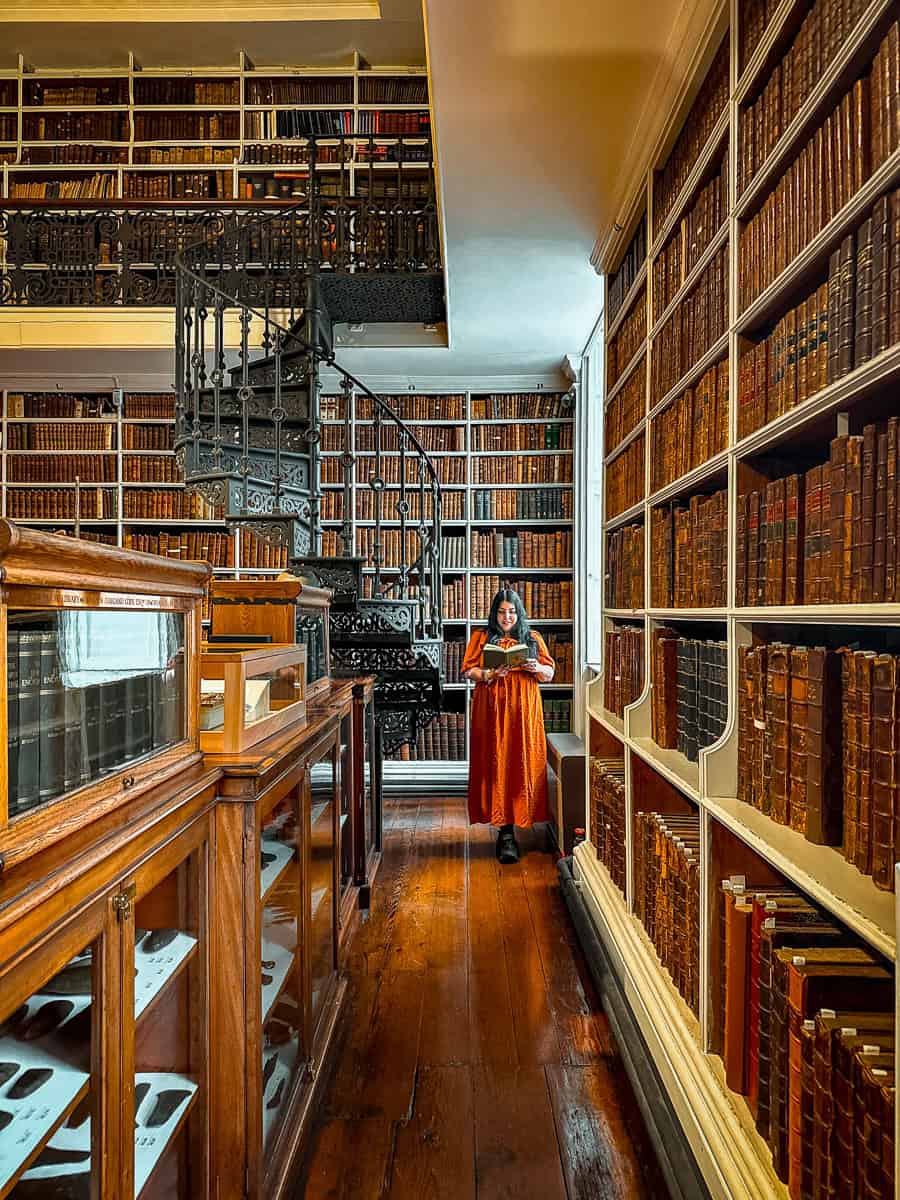
2. Browse the collection of precious books
There are over 46,000 precious books that you can browse here in all subjects
There are also medieval manuscripts (incunabula), maps, atlases and etchings.
You can’t handle any of the books on your own to protect them. So, if you would like to read one, you can ask the staff to help you.
You won’t just be looking at spines though. Most of the oldest volumes are in display cases so you can take a peek inside and see the pretty pages.

3. Jonathan Swift’s copy of Gulliver’s Travels
One of the great treasures of the library is Jonathan Swift’s private copy of Gulliver’s Travels.
The library knows it is his personal copy as you can see Swift’s handwriting of annotations on several pages.
There are parts furiously crossed out as his London publisher replaced words, colours and even entire sentences without his knowledge before the final draft went to print.
Swift was clearly very unhappy with these unexpected changes but the big question remains why his publisher made them without Swift’s consent.
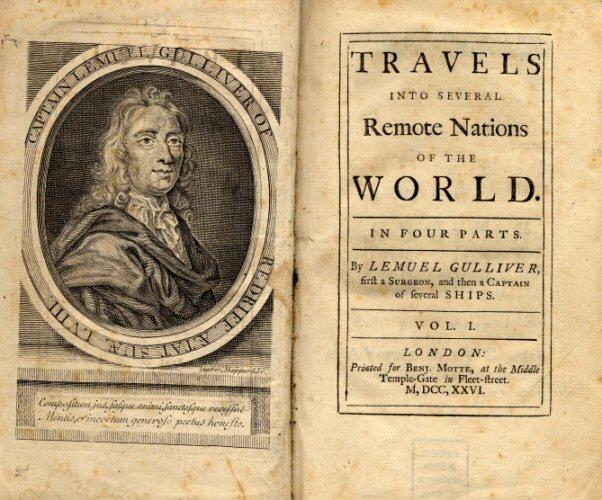
Although it’s a fictional book and loved by children, there are obvious mature political messages cryptically hidden in the text.
So, was his publisher scared of being implicated in political fallout or even treason against the crown?
It’s still a mystery that is debated today and the library will be more than happy to hear your thoughts.
I had a great discussion with Carol about all the controversial theories!
The original 1726 copy is protected in a display case but they have made a replica you can browse through at your leisure to see Swift’s notes.

Did you know? Japan is the only real country that is mentioned in Guilliver’s Travels, the rest are imaginary. So, lots of Japanese tourists visit this library to see the original copy.

4. Curios, exhibitions and family fun
As well as the collection of books, the library has permanent and temporary exhibitions throughout the year.
You can learn more about Richard Robinson in their permanent exhibition the Rokeby Collection.
Or, you can read about the library architect Thomas Cooley in the Architectural Legacy exhibition.
Plus, there are also some great temporary exhibits throughout the year. So, there’s always a reason to go back.
I was amazed by all the curiosities including Georgian wax gems, ancient maps, coins, medals, busts and more.
The library is also very family-friendly and there is lots to do for little ones.
There’s a great play area where toddlers can read, or play with soft toys. But, there are also treasure hunts and activity sheets for older children.
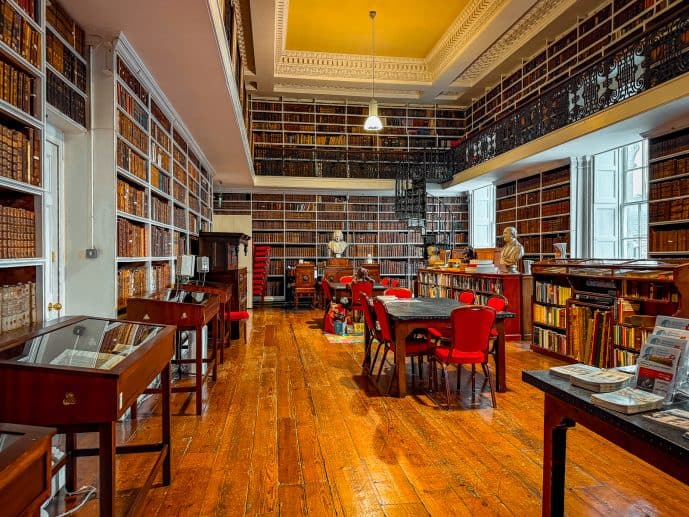
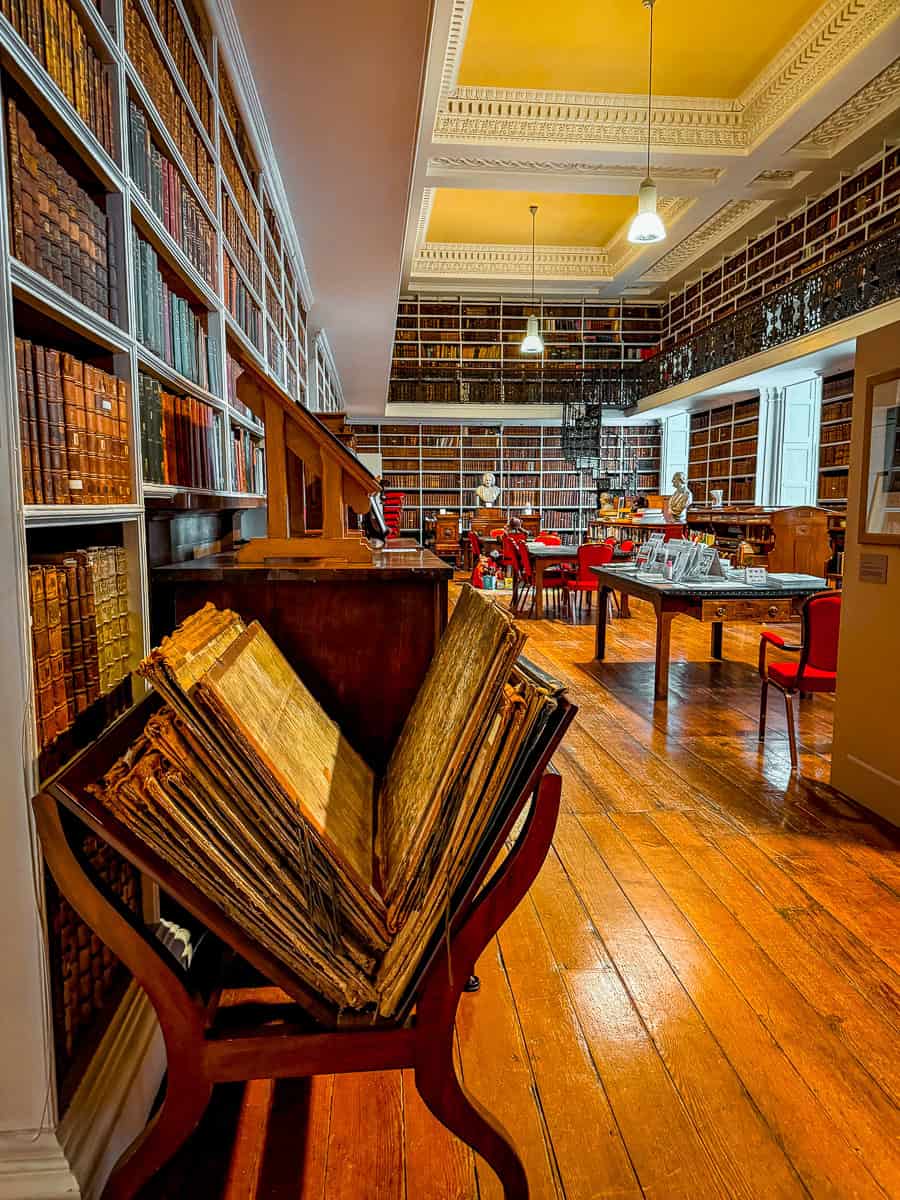
5. Library gift shop & visitor book
Before you leave this wonderful temple of knowledge, I would visit their gift shop to see their collection of souvenirs.
They had guidebooks, magnets, postcards and all sorts of wonderful bookish gifts to purchase.
You can also sign their library visitor book before you leave which I thought was a lovely touch.
It was great to see how many visitors had travelled to this library from all over the world!
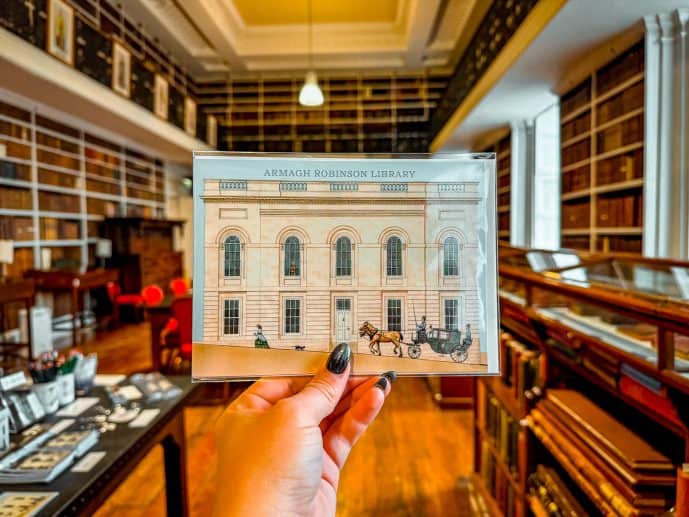
6. 5 Vicars’ Hill
If you want to extend your visit, you can pop over to 5 Vicars’ Hill around the corner.
The building was constructed in 1772 for Archbishop Richard Robinson as the Diocesan Registry.
Now, it’s an intriguing museum filled with curiosities from Robinson’s collections.
You can find coins, engravings, gems, prints and Christian artefacts as well as fine art.

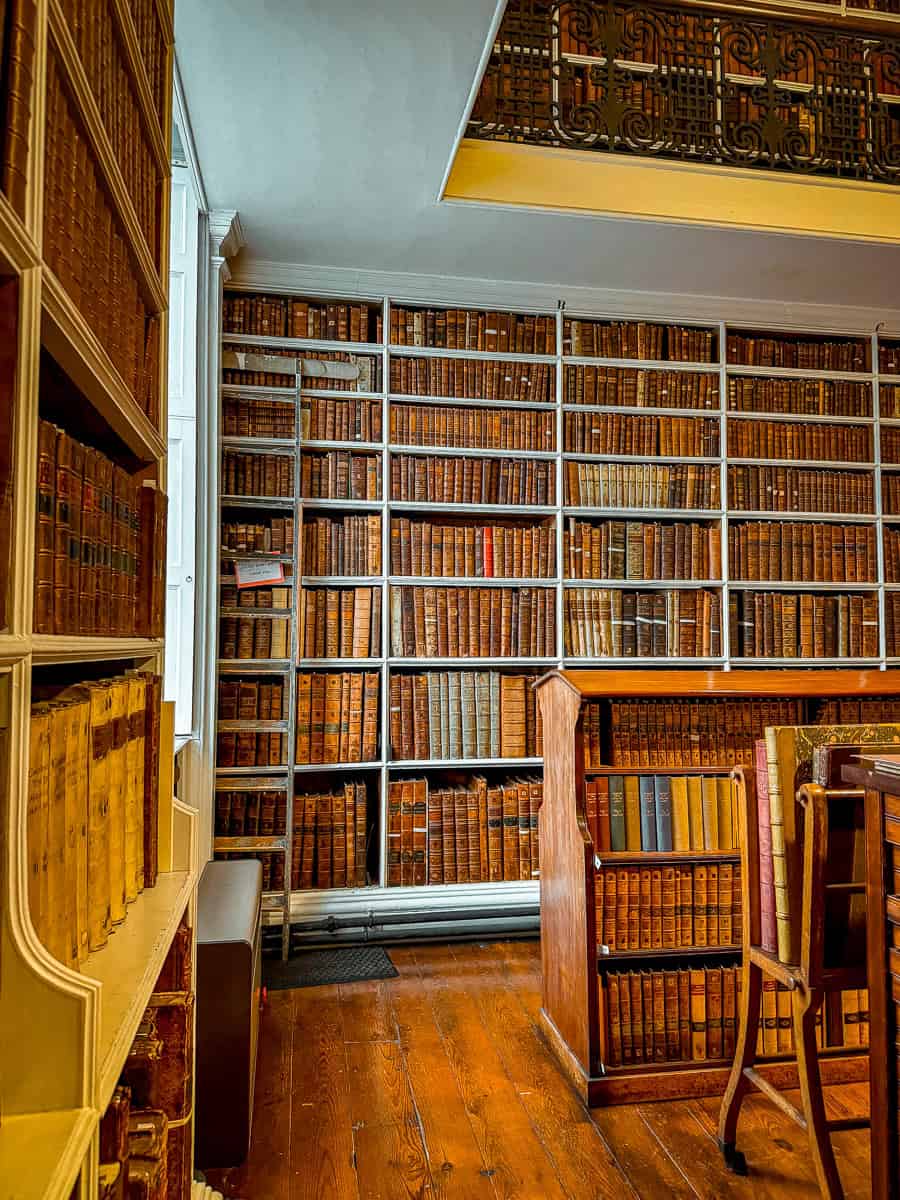
Is the Armagh Robinson Library worth visiting?
Yes, I highly recommend adding the Armagh Robinson Library to your literary bucket list.
Not only is this historic library visually beautiful with lots of precious books but it’s also one of the friendliest and welcoming places I’ve ever visited.
It’s a haven for readers and I spent over two hours there! There’s just so much to see and do inside.
Don’t skip this wonderful library in Northern Ireland. It’s truly a national treasure worth seeing.
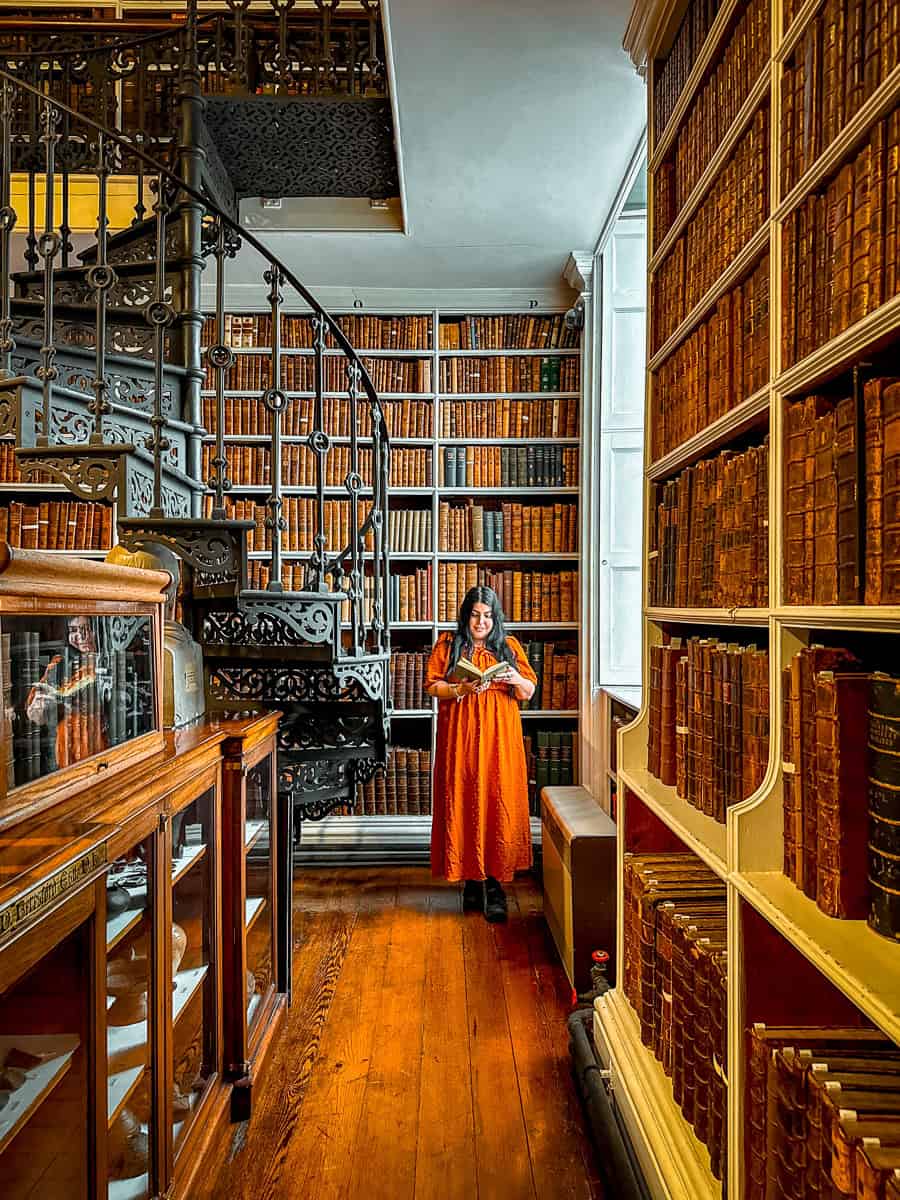
How to get to Armagh in Northern Ireland
Armagh is a delightful historic city that is located around a 50-minute drive from Belfast.
It’s easiest to drive but you can also get a direct bus from Belfast Grand Central Station.
The Translink Goldline service 251 will take you to the centre of Armagh in around 1 hour and 20 minutes.
You can also get an Irish Rail train to Portadown and then a local bus from Church Street to Armagh Bus Station.
When you reach Armagh, you can find the Robinson Library opposite St Patrick’s Cathedral on Abbey Street.


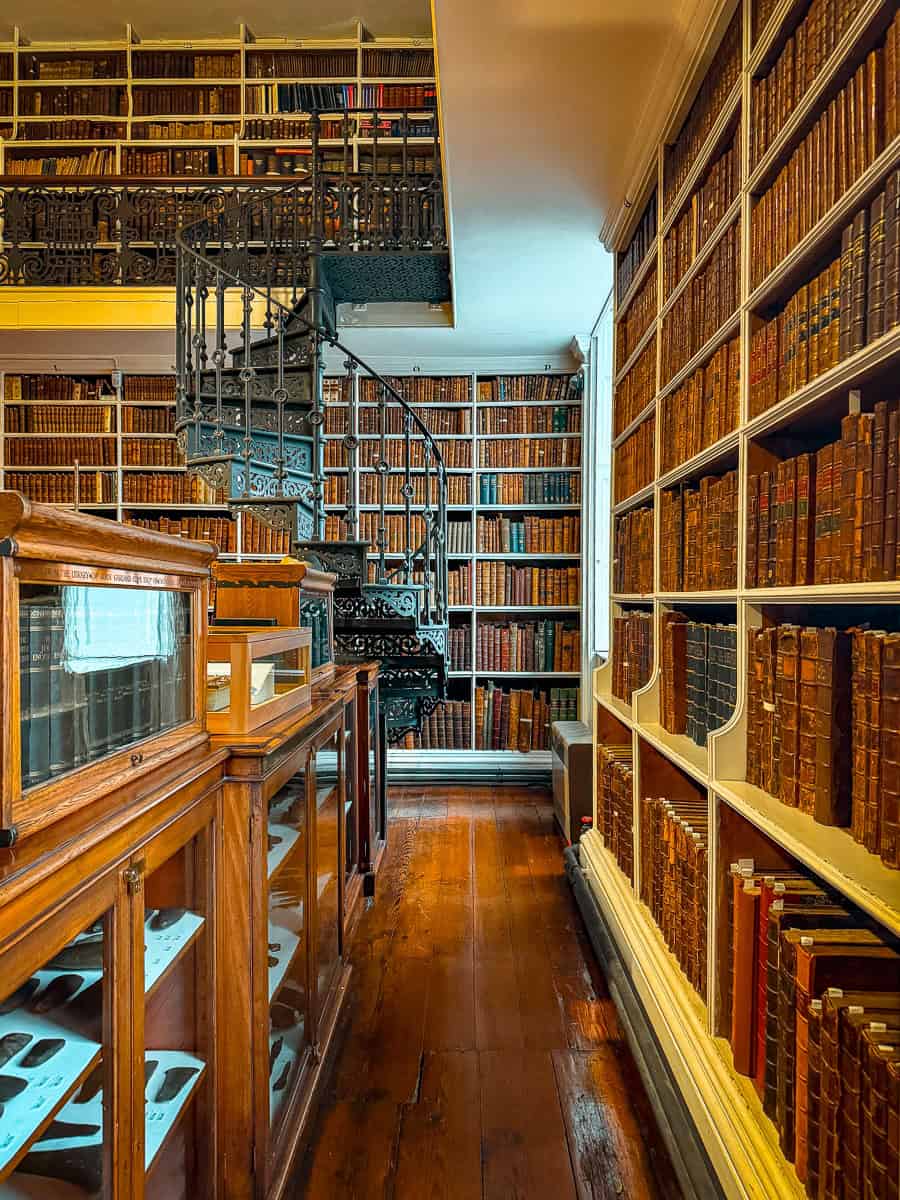
Library opening times & ticket prices
The library is open for visitors from Monday to Friday from 10 am – 1 pm and then from 2 pm – 4 pm.
They are also open on Saturdays but only for groups who have pre-booked.
It’s always best to check their website in case there are any exceptional days when the library is closed.
As a public library, it’s completely free to visit. But, donations are always appreciated.
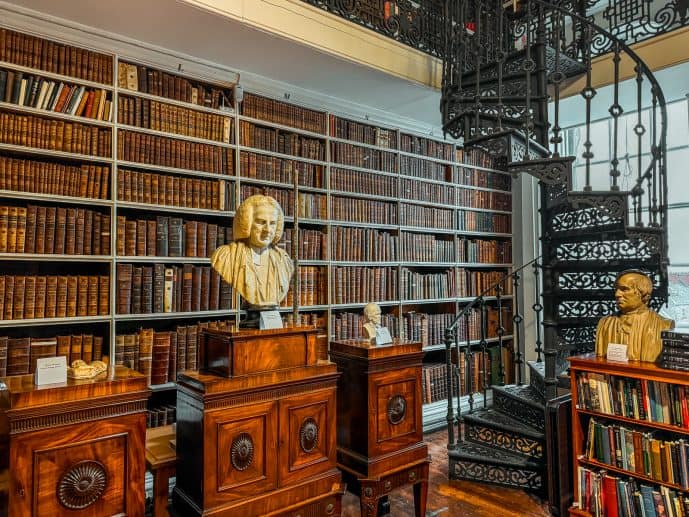
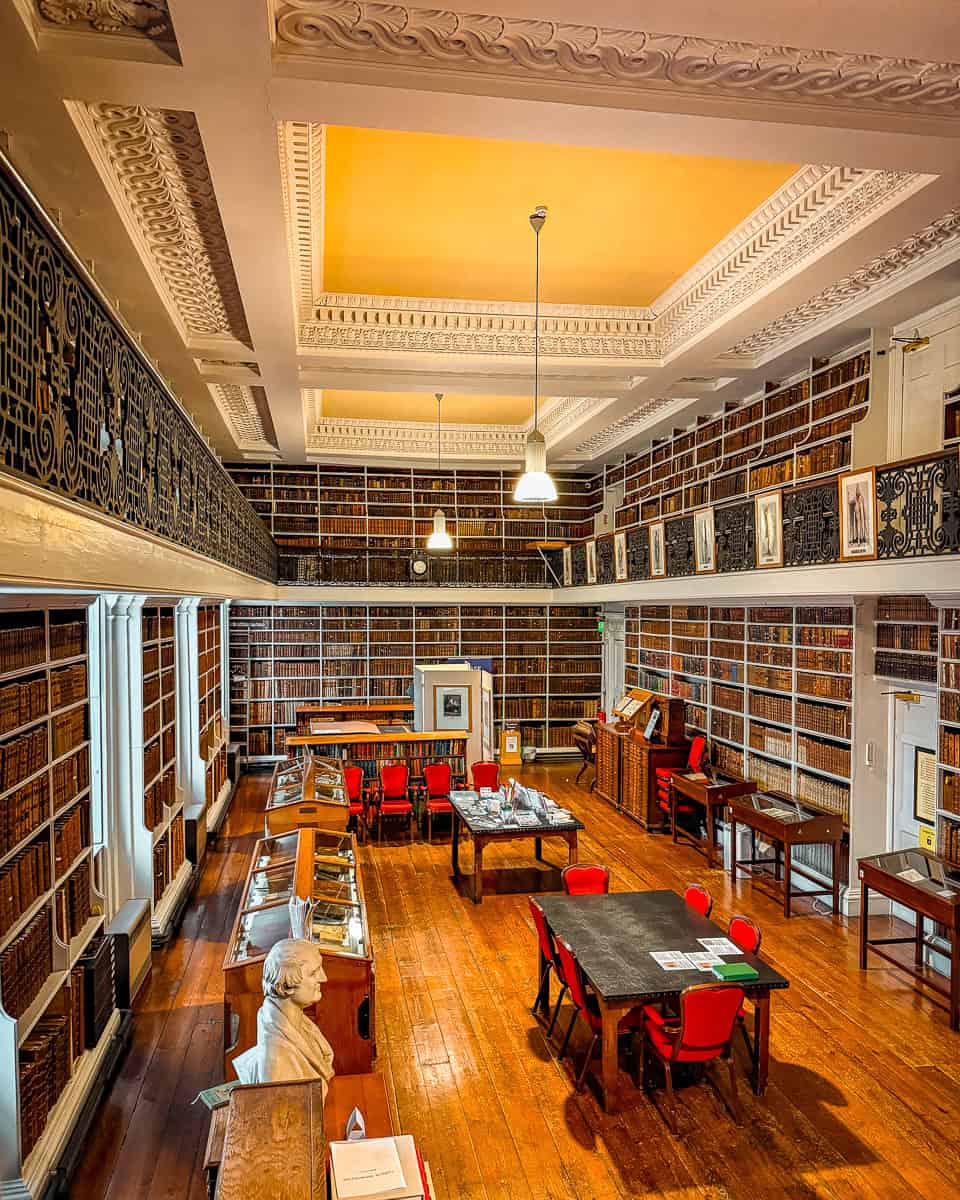
My top tips for visiting the library
- Check opening times – the library is closed for pre-booked groups only on Saturdays and closed on Sundays. It’s always best to double check opening hours before you go.
- Don’t be afraid to ask questions – the library staff are SO lovely, make sure to ask questions and feel free to explore.
- Take your time – you can spend as little or as much time in the library as you like.
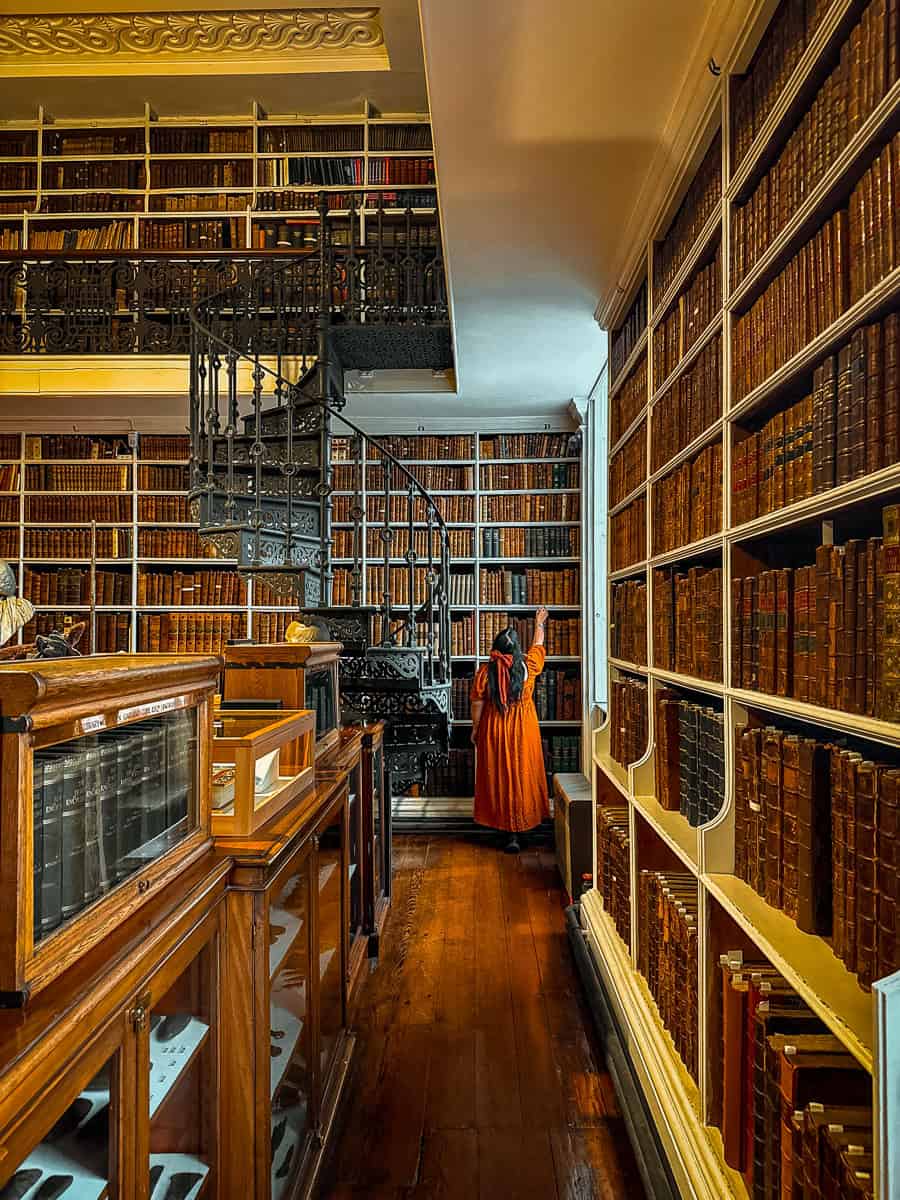
Other places to visit in Armagh
Beyond the library, Armagh is a delightful city that has some wonderful attractions.
The main highlights are the two cathedrals in Armagh. They are both dedicated to St Patrick, so it’s easy to get confused.
St Patrick’s Cathedral opposite the library is a Church of Ireland cathedral where Archbishop Richard Robinson served.
It was founded in the 5th century and is said to have been founded by St Patrick.
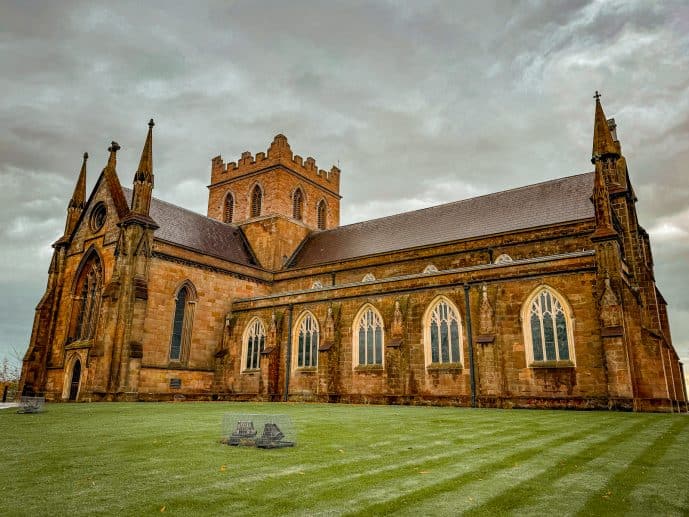
St Patrick’s Cathedral on the other side is Roman Catholic and built in the 19th century following Catholic emancipation.
It’s located high on a hillside and is free to visit. The interiors are also staggering and will take your breath away.
From the entrance, you also get one of the best views over Armagh. It makes a great photo opportunity.

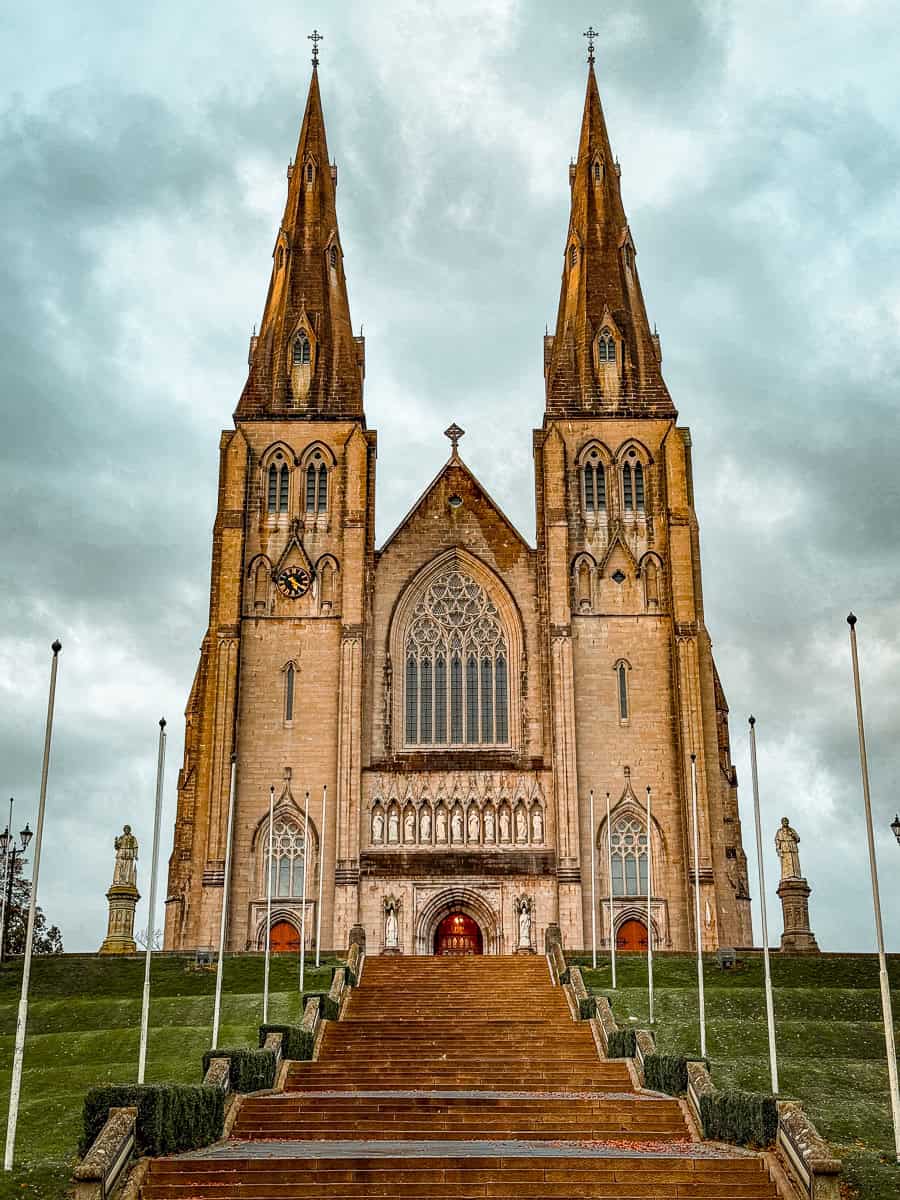
Read more of my Northern Ireland guides
Ballintoy Harbour – Welcome to the Iron Islands
How to visit Dunluce Castle
A complete guide for Carrick-a-Rede rope bridge
Game of Thrones Studio Tour review
How to visit the Game of Thrones Tapestry
Glass of Thrones walk in Belfast
How to visit the Dark Hedges
Cushendun Caves Game of Thrones location
How to visit Pollnagollum Caves
How to visit the Garvagh Pyramid
Glenarm Barbican – Visit a fairytale castle in Antrim
How to visit Gleno Waterfall
Crown Liquor Saloon – Visit a Gin Palace in Belfast

Discover Northern Ireland

Save the Armagh Robinson Library for later!
